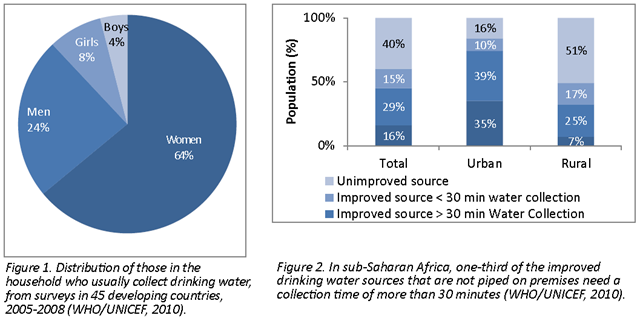Graph of the Day: Distribution of Household Water-collecting Duties in Developing Countries
Inadequate access to water and sanitation also hinders progress on achieving gender equality. In most households, women and girls are the primary carriers of water, and often need to travel more than 30 minutes round trip to collect water (see Figures 1 and 2); this is particularly true in sub-Saharan Africa. The resultant ‘time poverty’ of women and girls reinforces inequalities within households and communities, creating barriers for women and girls in terms of schooling, time to care for young children, literacy, rest, leisure, and opportunities to participate in the development of their communities. Girl children risk being deprived of the opportunity to attend school because of their water collection responsibilities. Girls are also more likely to drop out of school and their parents are more likely to withdraw them if schools lack appropriate sanitation facilities that offer privacy and dignity (Redhouse, 2004; UNGEI, 2003). The barrier to girls’ education created by a lack of safe and private school toilets is particularly tragic in light of the enormous development impact that educating girls has been shown to have.
World confronts serious water crisis, former heads of government and experts warn in new report [pdf]
